WA Waters - existing hydrophone network
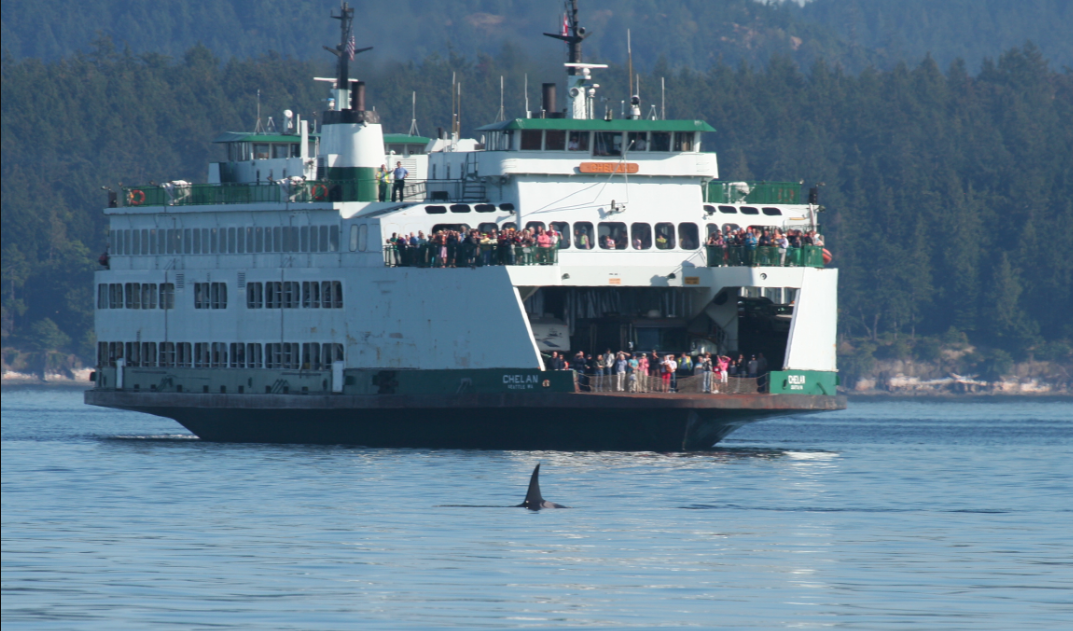
Scott Veirs, Orcasound hydrophone network
Ship noise workshop on Oct 3, 2019, in Seattle
Existing hydrophone network
Assets that could help implement Rec. #22
Outline (focus on real-time assets in WA):
- Non-WA, Non-Orcasound assets you should know about
- Orcasound: a tool for SRKW+ research, management, and education
- Orcasound: a tool for characterizing underwater noise in SRKW critical habitat
- Orcasound: a partner (with PSEMP and you!) in tracking Puget Sound wildlife
About me:
- UW Oceanography, PhD (2003)
- 15+ years SRKW bioacoustic research/teaching and coordinating Orcasound
- Chair of Marine Mammal Work Group within the Puget Sound Ecosystem Monitoring Program
Non-WA or Non-Orcasound assets...
...that may be relevant to implementing Recommendation #22
|
Orcasound
An evolving tool for SRKW conservation
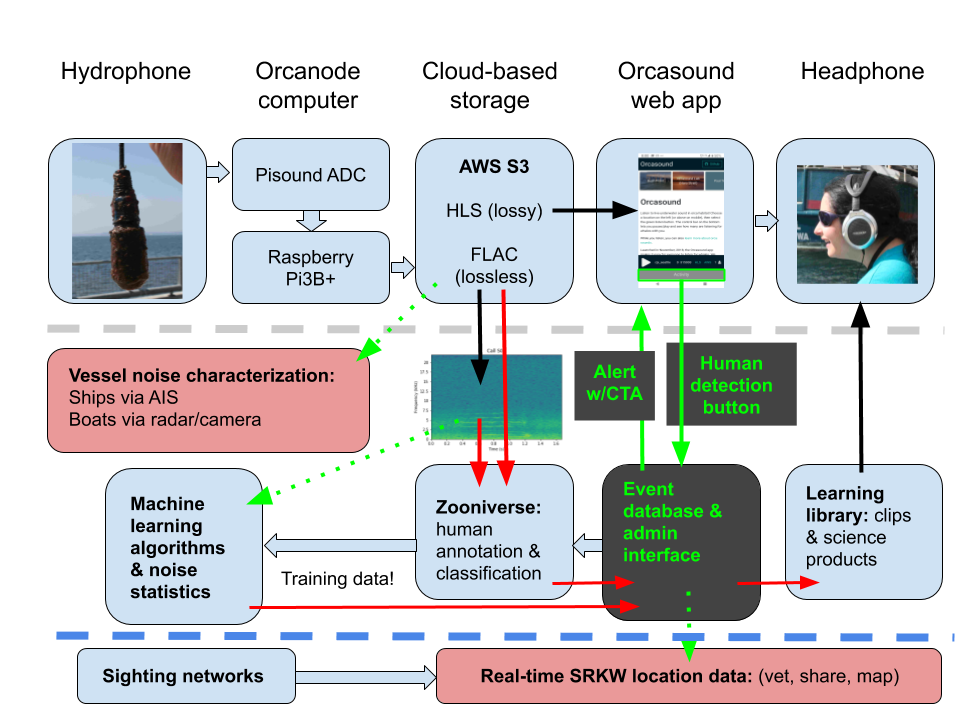
The product of 15 years of citizen scientists listening for whales, Orcasound is now a cooperative hydrophone network and an innovative open-source hardware/software project.
Orcasound funding history and future
From NOAA/WDFW contracts/grants to crowd-funding, philanthropy, and hackathons

Orcasound 2019-2020 map and membership
Cooperative of researchers, educators, & citizen scientists
Physical exhibits include: Seattle Aquarium; Port Townsend Marine Science Center; Langley Whale Center; Lime Kiln Visitor's Center (via FOLKS) |
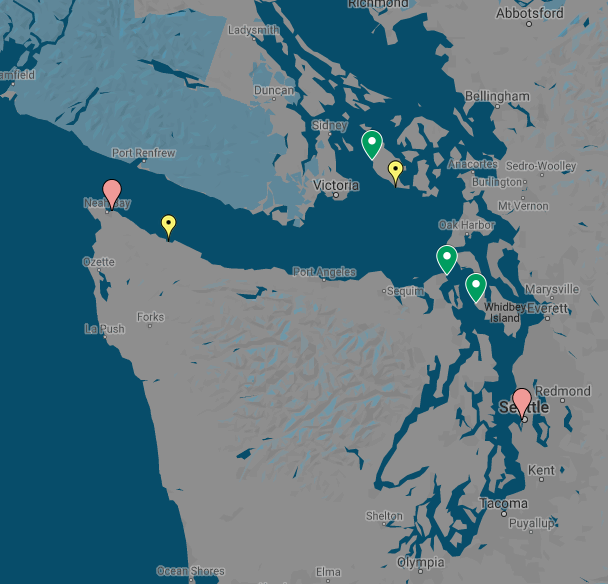
|
You can join Orcasound, too! Just e-sign the MOA and heed the Creative Commons BY-NC-SA license.
Orcasound hardware evolution
A listening node for less than $1000 (U.S.)!
|
Basic ingredients (and costs):
60% of cost is hydrophones! (>75-95% for research nodes) |

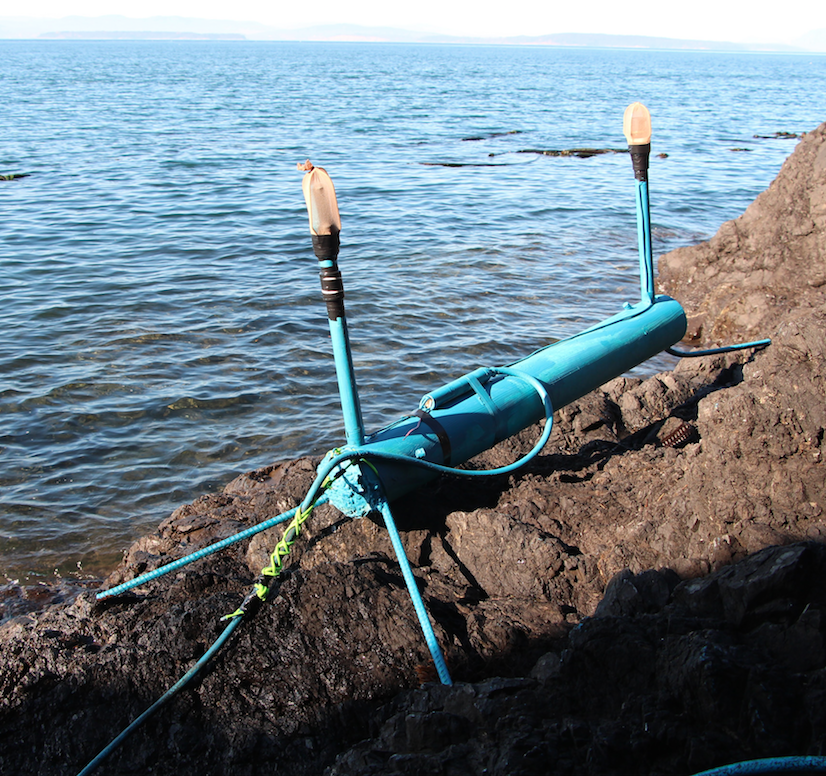
|
Orcasound software evolution
2017 challenge: Can we make it easy to listen, cloud-based, & scalable?
Free open-source software to stream audio that "just works" on all devices/browsers
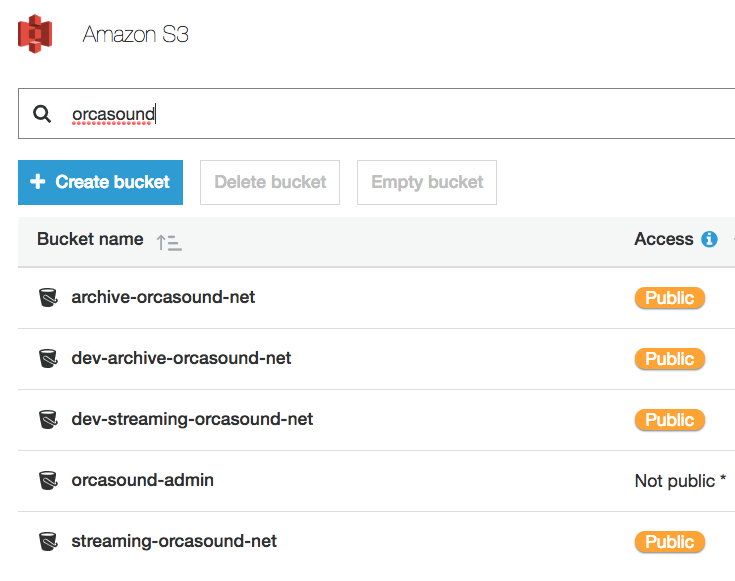
- Linux, Docker
- ffmpeg -- encodes audio data in two formats:
- Compressed & lossy: HLS segments (HTTP Live Streaming)
- Compressed, lossless: FLAC (Free Lossless Audio Codec)
Amazon S3 for archiving data in the cloud
- s3fs -- uploads data files and "manifest" to Simple Storage Services (S3)
- FLAC filenames contain UTC timestamp
What's next for Orcasound?
Make “listening for whales” interactive and inform real-time end-users
For free live-listening, browse to: live.orcasound.net
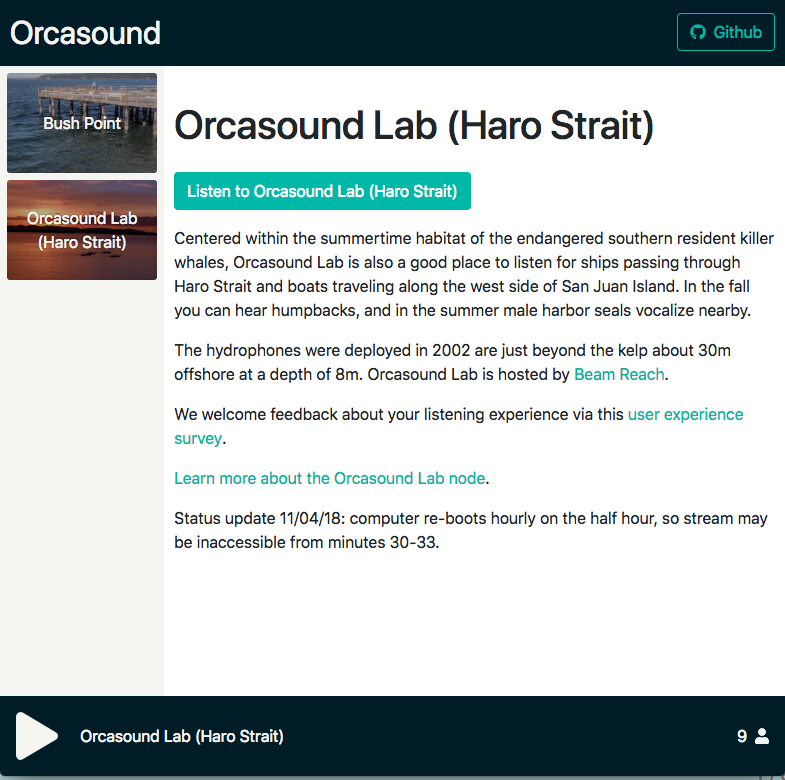 |
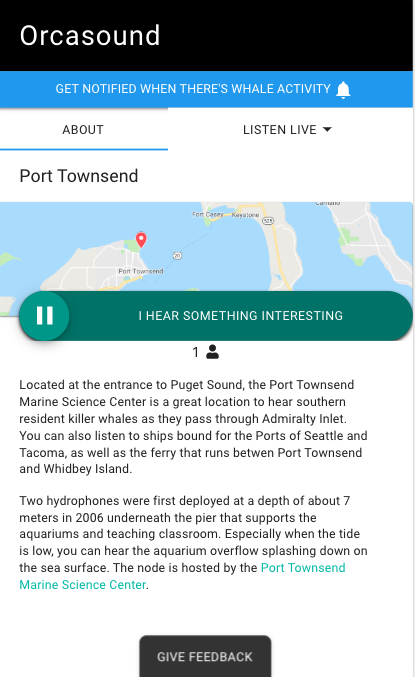 |
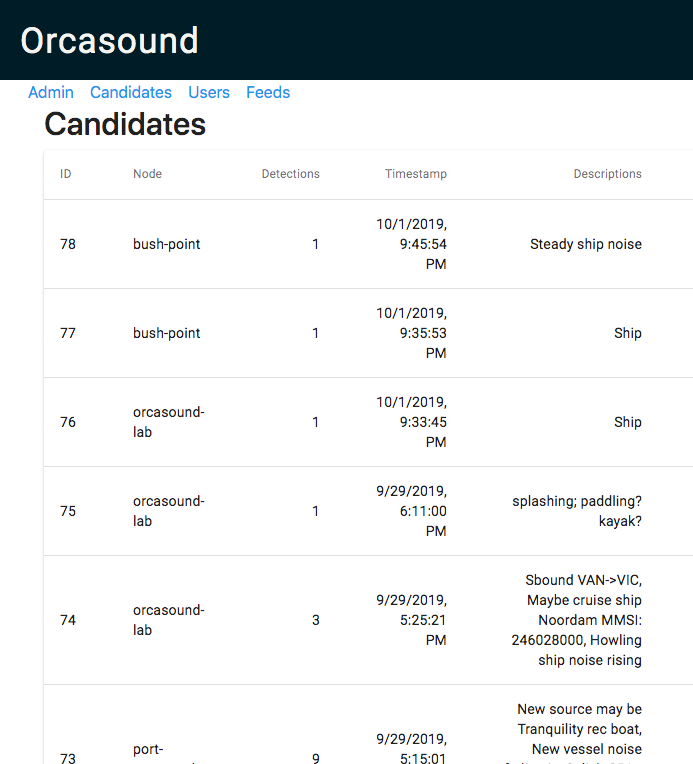 |
Orcasound 1.0 player published Nov. 1, 2018. Orcasound 2.0 is in beta-testing & will launch in fall, 2019.
Orcasound for characterizing vessel noise
The bad news: Vessel noise can mask both calls & clicks
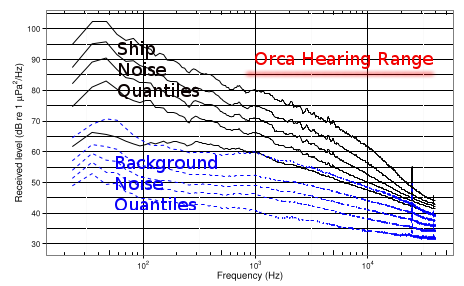
Frequencies of vessel noise overlap
|
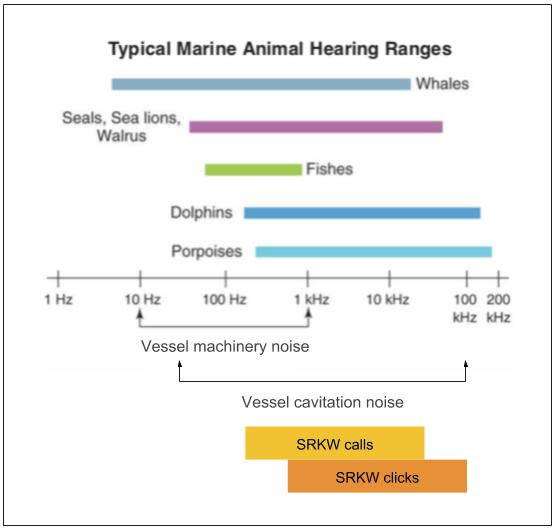
Squeaky ship: |
Vessel noise mitigation
The good news: there are many ways to "more than mitigate" vessel noise.
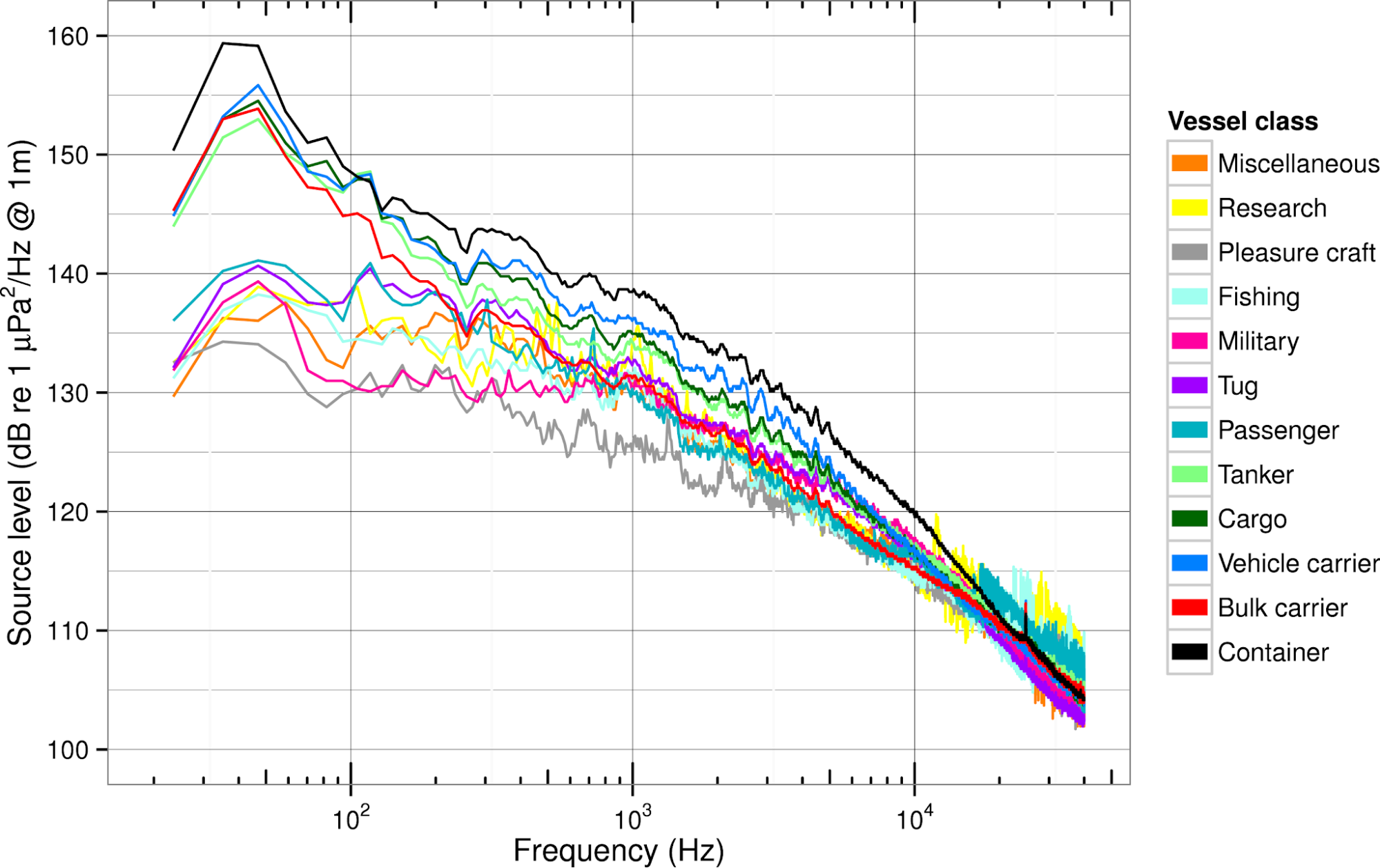 |
 |
Operational (temporary) and technological (permanent) options (see Williams+2019)
Broadband received level peaks
Ships and boats have similar maxima, but ships last longer
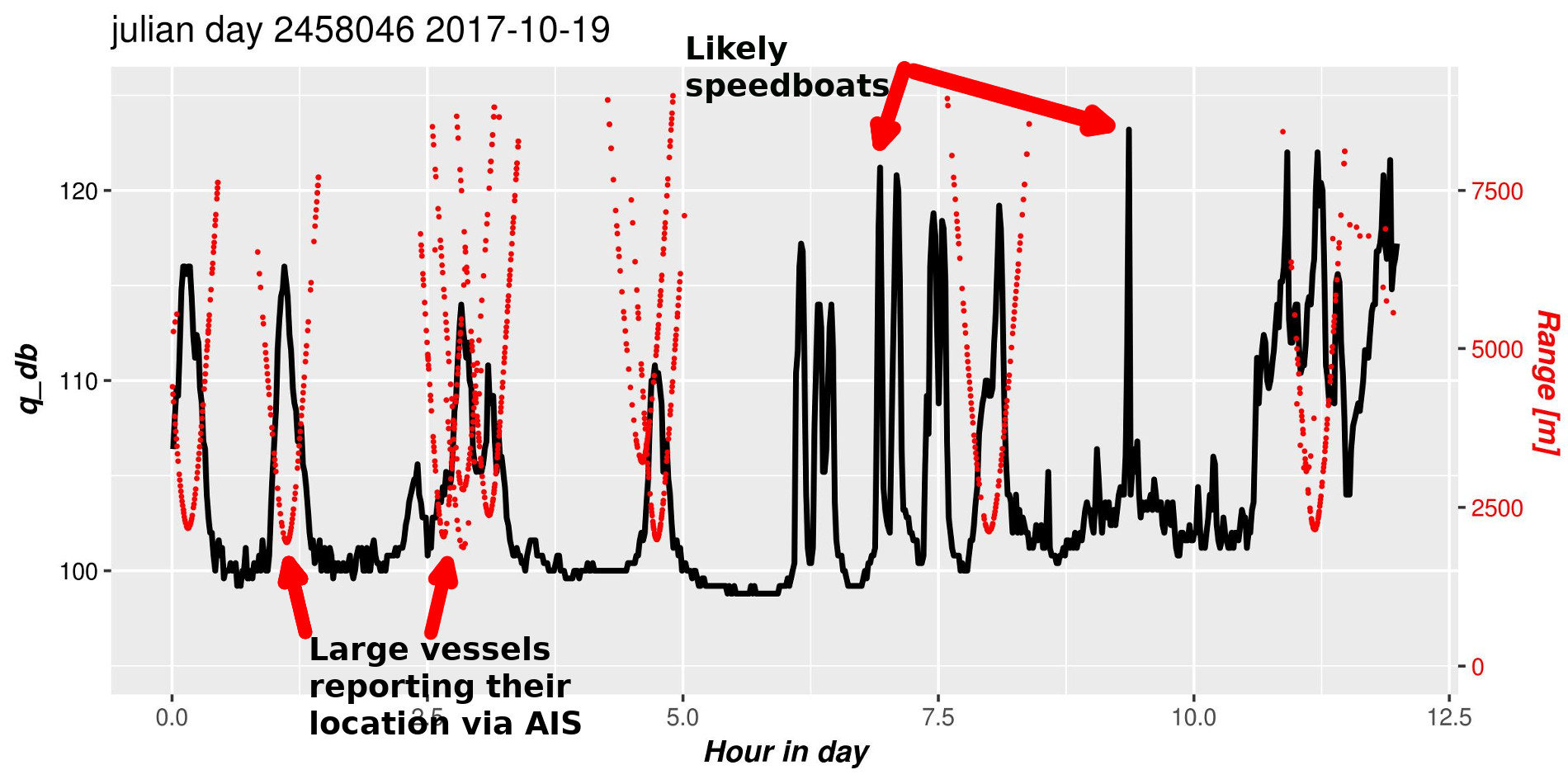
Validating noise peaks & speed with AIS, cameras, and radar
Slow boats have lower maxima, but usually last longer than fast boats...
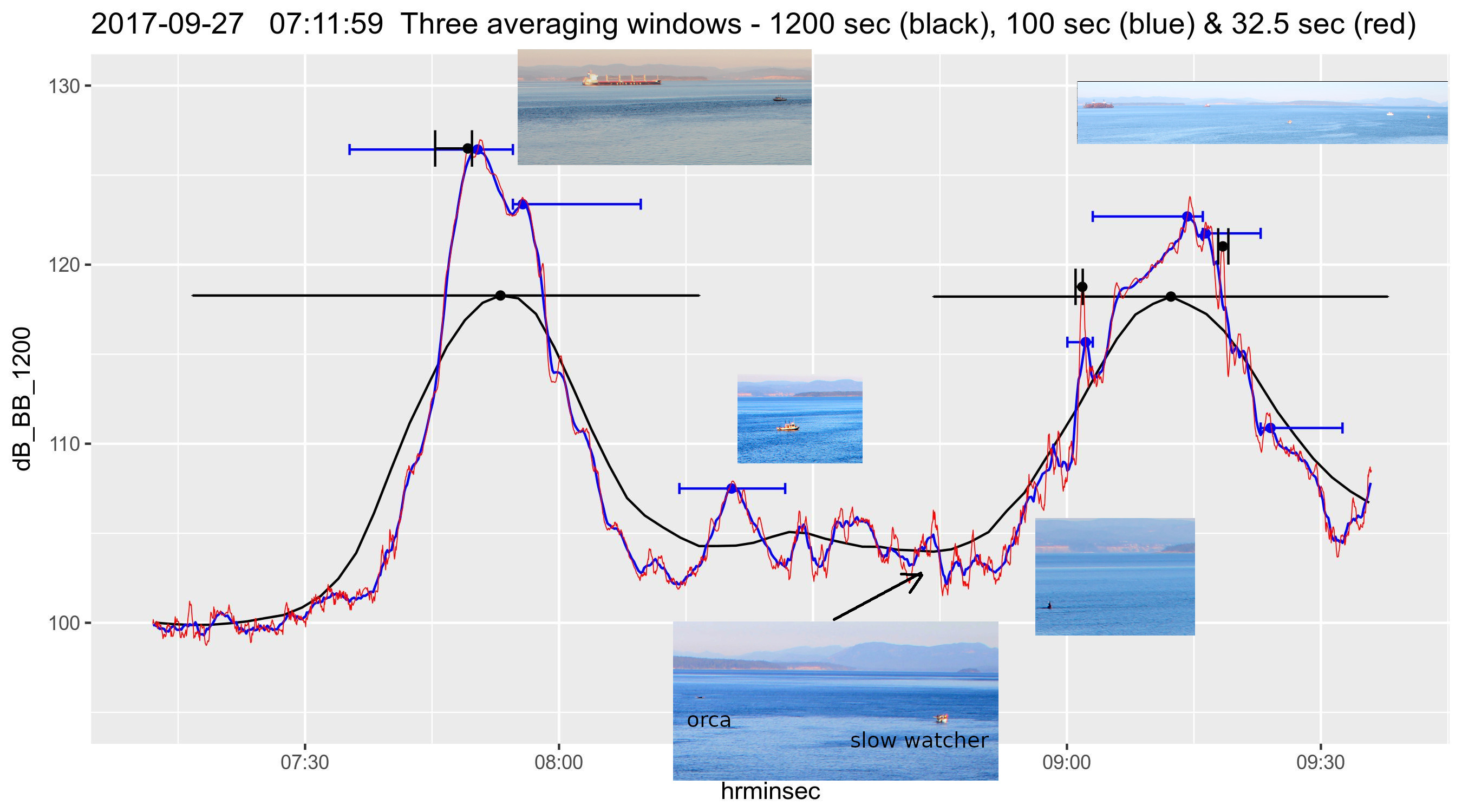
Images from the U.Vic./NEMES automated camera at Orcasound Lab. Smooth curve (black) is 1200-second running average broadband dB level. Now also tracking boat type & speed with M2 AIS/radar/camera system./p>
Monitoring ship noise in SRKW habitat
Urban ambient noise level: a baseline for "delta" noise metrics
Maximum received noise level vs duration
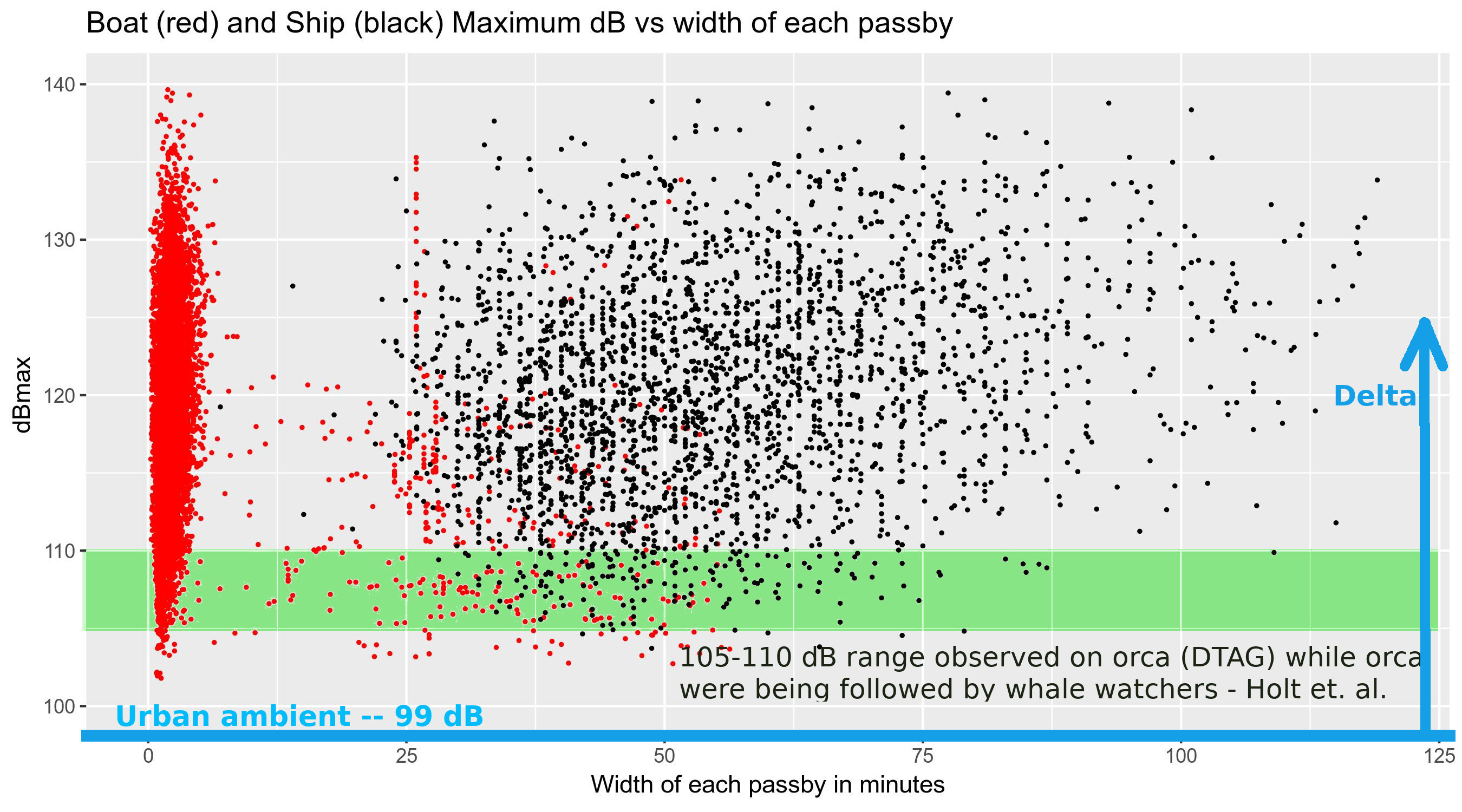 From ASA 2019 talk by V.Veirs with ref. to Holt et al., 2017, "Noise levels received by endangered killer whales..." From ASA 2019 talk by V.Veirs with ref. to Holt et al., 2017, "Noise levels received by endangered killer whales..."
|
Monitoring aircraft noise in Seattle 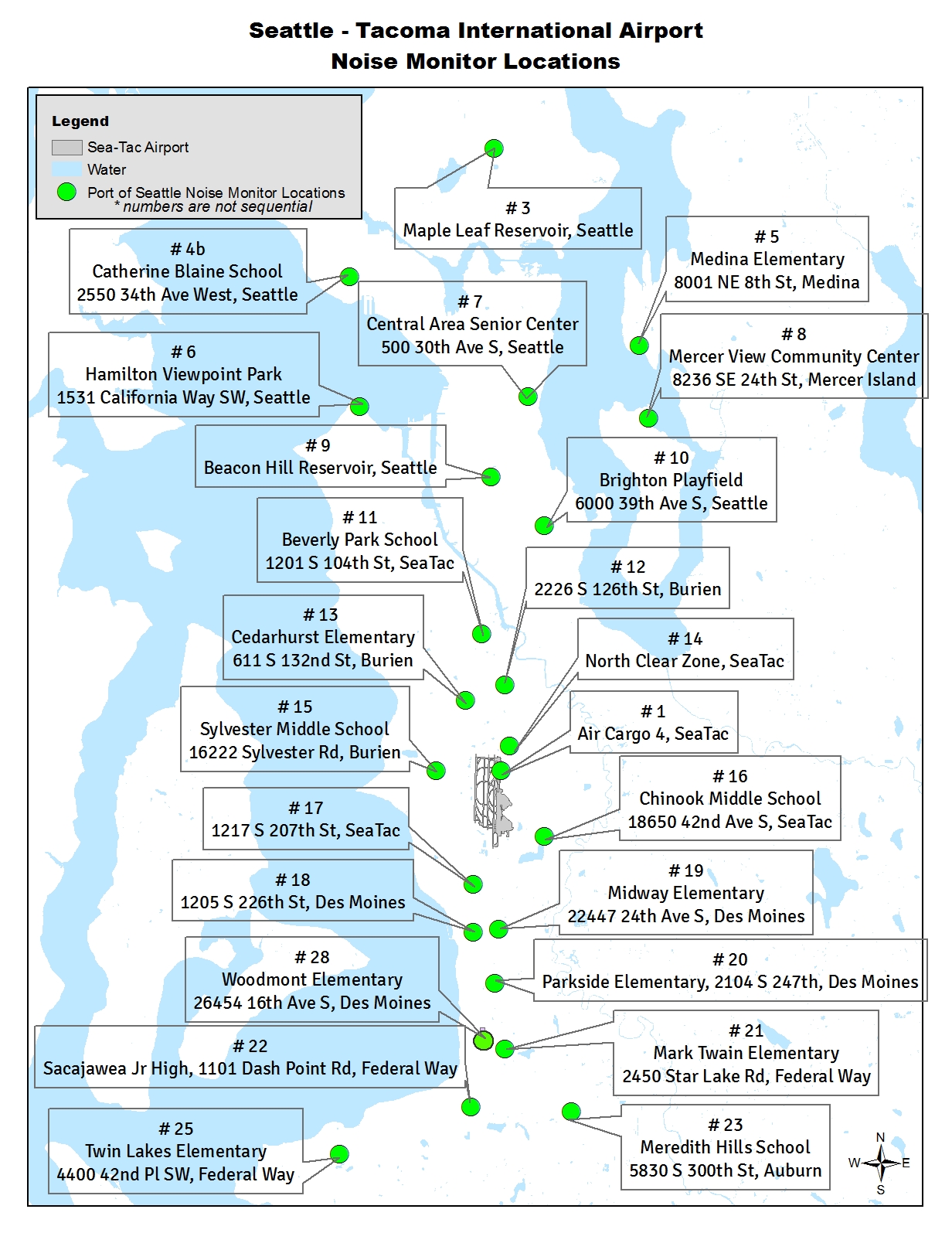
|
Orcasound: as a partner in tracking SRKWs
Together we can detect & protect SRKW (with cool tech, like... Localization)
|
|
Mother-calf conversation! |
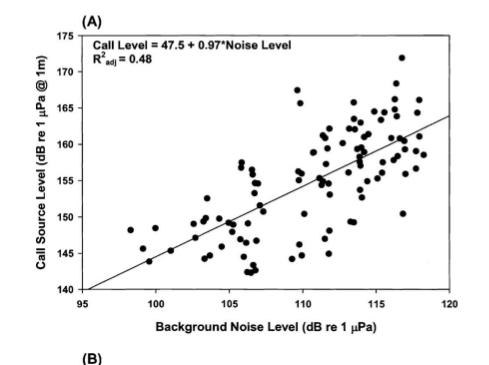 |
|
| SRKWs "speak up" in noise from nearby boats (Holt, Noren, Veirs, Emmons & Veirs, 2009) |
2008: ASA talk by V.Veirs |
Orcasound for tracking SRKWs
Cool tech: machine learning

Emerging orca AI (in real-time?):
- Orcasound's archive of train/test data
- Orcasound collaboration with UW and Microsoft with Dr. David Bain
- Ocean Networks Canada workshops in November
- Meridian's Keta (open-source)
- ORCA-SPOT (trained on Orca Lab NRKW calls)
- DFO+Google?
Admiralty Inlet study (unpublished) -- Of 22 SRKW transits during local daytime,
humans detect 45%, Wholistener 64%, combined 77%.

|
Emerging orca AI (in real-time?):
|
Admiralty Inlet study (unpublished) -- Of 22 SRKW transits during local daytime,
humans detect 45%, Wholistener 64%, combined 77%.
Orcasound as a partner in tracking SRKWs
Synergy of real-time sighting and listening networks
Most recent SRKW "hearing"
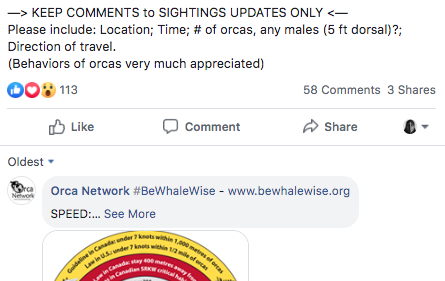

|
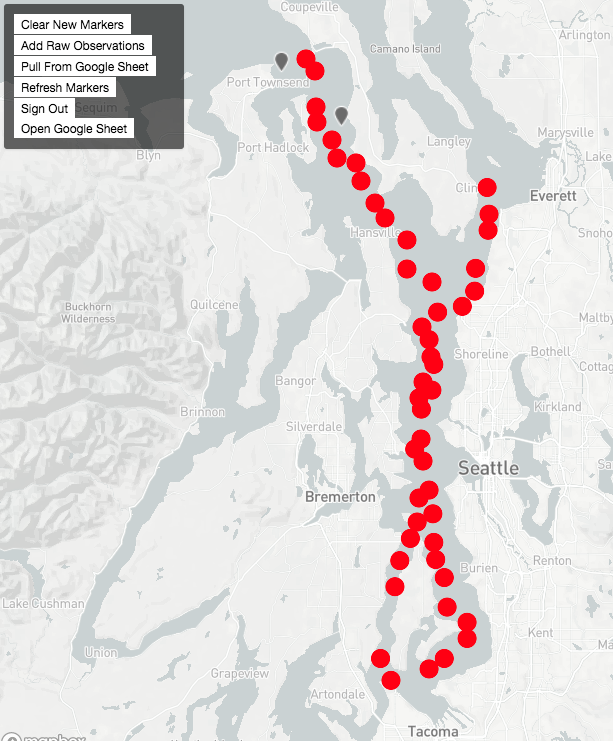 h
h |
Orcasound for tracking SRKWs
Cool tech: new apps to help track marine life
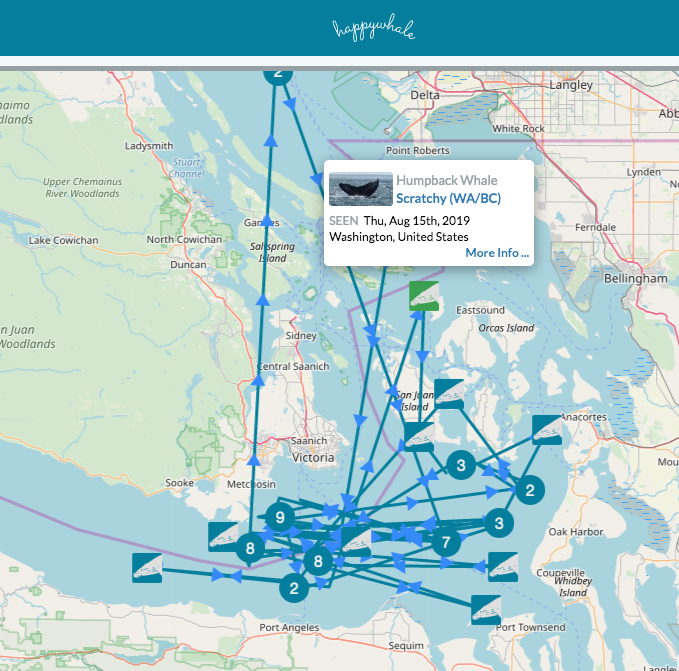 Upload a fluke photo; AI yields an ID! |
Members of the PSEMP Marine Mammal Work Group, and organizational members of Orcasound, will continue to study, test, and develop these apps and other pioneering ways to share marine mammal location data within Washington and across the Salish Sea. PSEMP Spatial Data Workshop, Oct. 31, Edmonds Through 2019, Orcasound 2.0 plans to provide real-time detections of SRKWs to the WRAS. |
Questions?
Questions!
- Is being "big-ship-ready" going to be good for the SRKWs from an acoustic standpoint?
- In terms of both the costs to the industry and benefit to the SRKWs, how do operational changes like slowing down compare with permanent adoptions of quieting technologies?
- Is it worth building a whale tracking network or should we require all ships that can slow to do so (or both?)?
Zones of bioacoustic impact from noise
|
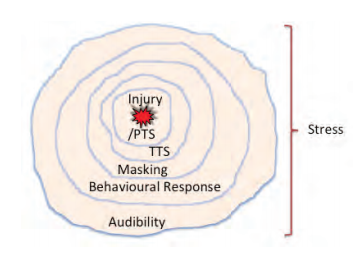
|
Potential impacts of noise on southern resident killer whales (SRKWs)
|
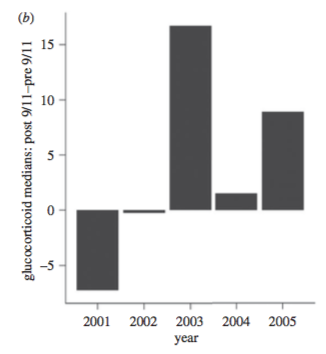 Right whale stress fell after 9/11 decreased ship noise in 2001 (Rolland et al., 2012)
Right whale stress fell after 9/11 decreased ship noise in 2001 (Rolland et al., 2012)
|
/